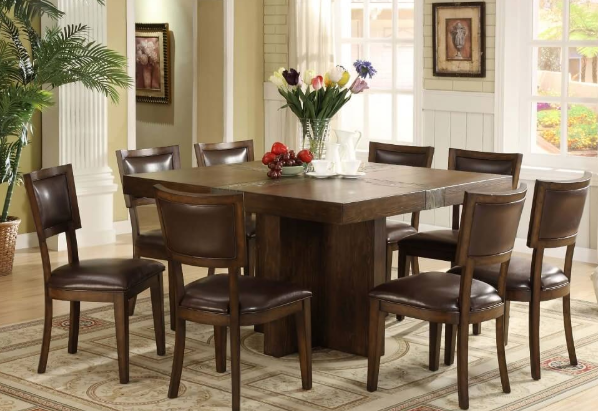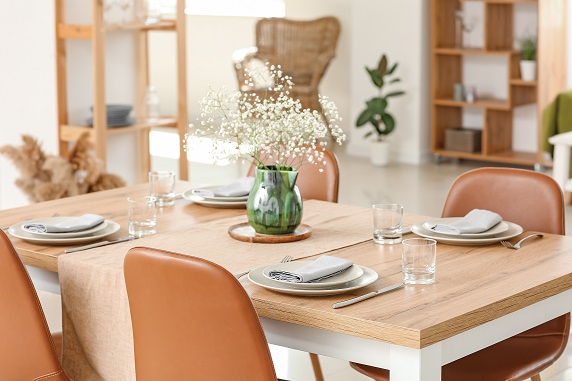The origins of carver chairs are thought to date back to the late 19th century, when a governor in Plymouth, Massachusetts, owned dining chairs with armrests. He reportedly named them after the first governor and founder of the Plymouth colony, John Carver.
There is also another theory, that carver dining chairs simply got their name as they were typically used by the head of the household, who would perform the task of carving the meat.
These early carver chairs were usually made from stunning hardwood, and featured a different design from the others at the dining table. They often boasted wider dimensions and were topped with decorative wooden ornaments, known as finials. Most noticeably, early carver dining chairs had three vertical spindles at the rear of the chair for support.
Modern dining chairs with armrests
Whilst the original design of the carver chair has changed considerably over the years, modern dining chairs with armrests are still a popular choice in many homes.
Carver luxury dining chairs make a prominent feature in any home. They are usually only placed at the ends of the table, as dining chairs with arms tend to take up more space than those without.
Their elegant designs make modern luxury dining chairs with armrests an eye-catching showpiece. With such a wide range of carver chairs on the market today, whether you’re looking for period dining chairs or more contemporary dining chairs with armrests, you’ll be spoilt for choice.
What is the best material for dining chairs?
Luxury dining chairs should stand the test of time. In order to do this, they need to be functional and stylish, easy to clean, and durable. And since you’ll spend a large percentage of your time sat on them each day, it goes without saying that comfort should be a priority.
Dining chairs should therefore be made from materials that tick all these boxes. Some of the best materials for dining chairs include wood, metal, and plastic.
Here’s a little about the benefits of choosing dining chairs with armrests made from each of these materials.
Plastic dining chairs with armrests
Plastic dining chairs offer excellent value for money and are extremely easy to maintain.
They don’t have the same tendency to dent as metal dining chairs. Additionally, they don’t frequently suffer from scratch marks, as can be the case with wooden chairs.
Plastic dining chairs with armrests are also lightweight, meaning it’s easy to relocate them whenever you need to.
However, if you’re on the hunt for classic carver dining chairs, plastic may not be the look you’re going for.
Wooden luxury dining chairs with armrests
Wooden dining chairs are often made from oak, beech, or ash. They can feature sophisticated designs, making wood an ideal choice for more intricate carver dining chairs.
As wood is a natural material, wooden luxury dining chairs are resistant to moisture. They can be used outside in the warmer months, unlike metal dining chairs, which can be prone to rusting.
Metal dining chairs with armrests
Metal is the strongest material for dining chairs. Metal luxury dining chairs with armrests are often cheaper than their wooden counterparts, and offer a more contemporary vibe.
Painted metal dining chairs will chip less than painted wooden ones. However, they can be prone to rusting, making them unsuitable for outdoor use.
Metal dining chairs also dent more easily than those made from plastic or wood.
Upholstered carver luxury dining chairs
Should you decide to opt for upholstered carver luxury dining chairs, the most popular fabrics include:
- Cotton blend
- Polyester
- Vinyl
- Velvet
- Leather
- Faux suede
Where can I buy luxury dining chairs with armrests?
Now that you know a little more about carver dining chairs, and the pros and cons of the different types, you’re ready to start shopping!
Arighi Bianchi have a gorgeous range of luxury dining chairs with (and without) armrests, as well as a stunning collection of dining tables. Mix and match your favourites today!







